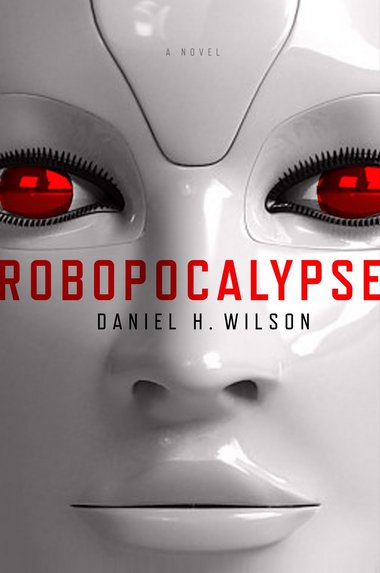
While not as popular as vampires and zombies, stories involving robots have their own sort of appeal. From Isaac Asimov’s novel (and later film) I, Robot to the titular robots in James Cameron’s Terminator films, to the various droids and other artificial creations populating the Star Wars universe, robots occupy a small yet popular niche in our current pop culture. Even when cast in a less positive light -the Reapers in the Mass Effect games come to mind- the appeal of robots (and often the varying levels of artificial intelligence that power them) is unwavering. More and more media is focusing in on artificial intelligence and the potential consequences of that technology ‘going rogue’ and turning on its creators.
In the middle of this pack of popular robot media, Daniel H. Wilson’s novel Robopocalypse appears. Better known for more humorous books like How to Survive a Robot Uprising, this is his first foray into writing a ‘serious’ fiction novel. I had the privilege of both meeting Dr. Wilson when WonderCon was at the Anaheim Convention Center in March of 2012. As I’m always looking for new books to occupy my time when traveling between L.A. and San Diego to see family, I picked up a copy of the book when I saw that it was available for sale. I read it on my Spring Break trek back to my parents’ home, then proceeded to re-read it on the trip back to the Valley for school.
The novel is written is a cameo/vignette style that I don’t see a lot of in novels these days. It begins at the end, so to speak. At the start of the book, the war against the artificial intelligence Archos has just ended. From there, the novel travels back to the beginning of the robot war, using a vignette-style of storytelling that is reminiscent of cobbled-together security camera footage. The vignettes show how the war began, how it progresses, and how it eventually ends. Along the way, the reader is introduced to a number of characters whose contributions against the robots were deemed significant enough to be archived by Archos itself. Dr. Wilson does a great job stoking the paranoia fuel with this novel; for example, one of the pre-war vignettes involves a near-collision between two airliners that is only narrowly averted by the flight crews. The robots themselves are also described in often-chilling details, especially as the novel progresses and they become more advanced.
As I read the book, I was immediately struck by how similar Dr. Wilson’s writing is to Michael Crichton’s earlier writings. I think this is the strongest point of his writing, how he makes the vignettes stand out and be believable without burying the narration in loads of technical details. Many of the details he uses are chilling, such as the parasitic robots that are introduced as the book’s climactic battle approaches. As the war progresses, the scenes are portrayed in a way that is descriptive without being overly gory or gratuitous. There were a number of times when I had to set the book down because the scene I had just read was more intense than I had been prepared for. But those scenes only helped to further hook me into the book, which I was disappointed to finish as quickly as I did.
As good as this novel is, however, it isn’t perfect. There are a few small nitpicks that show up as the novel progresses. First, because of the nature of the cameo/vignette storytelling, you really only get a rudimentary understanding of the characters and the situations they are in. This is a real disadvantage in getting to know the characters, as it deprives the reader of the ability to really connect with them. There were a couple scenes in the novel that would have made me cry, but because the characters felt slightly underdeveloped, it lessened the novel, the limited perspective does work, but it can seem jarring and underwhelming when transitioning to this book from novels with more traditional framing. In the second half of the novel, a few of the plot and character developments felt a bit deus ex machina to me, as though they were inserted simply to bring the novel to a close faster. Not to say the characters involved in these developments were uninteresting or unlikable, simply that the parts of the storyline they were involved in felt a bit shoehorned and contrived.
But those flaws really don’t detract all that much from what is already an interesting story. Currently, there is a lot of research going into robotics and artificial intelligence for various purposes, and the thought of that artificial intelligence going rogue and taking all of our machines with it is more than a bit chilling. This novel provides just enough paranoia fuel to entertain, without being so terrifying as to make you swear off technology forever. I look forward not only to reading more of Dr. Wilson’s novels, but also to seeing the movie Robopocalypse, which is currently in production (with Steven Spielberg directing) and slated for an April 2014 release.
